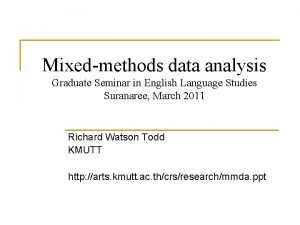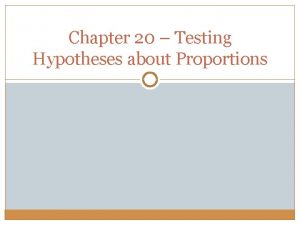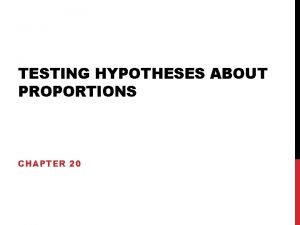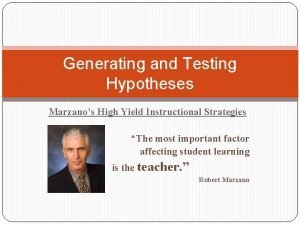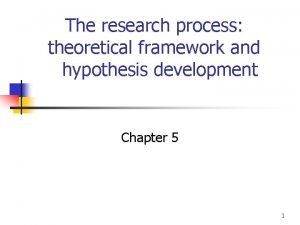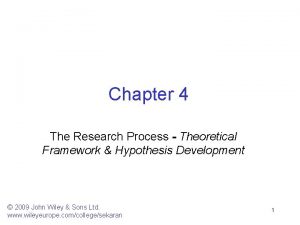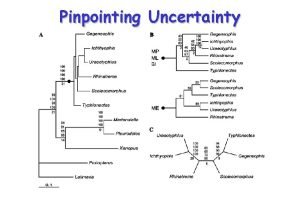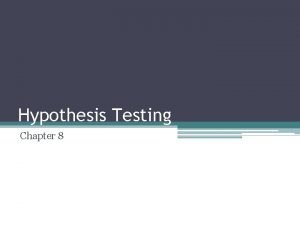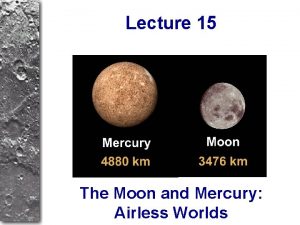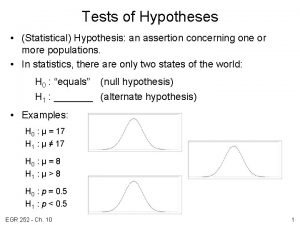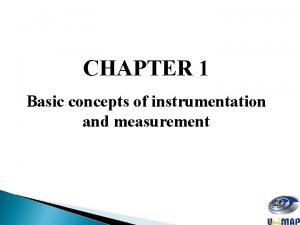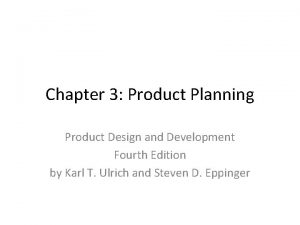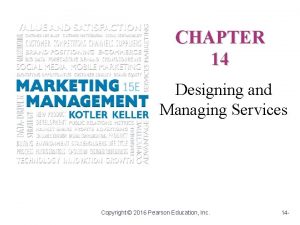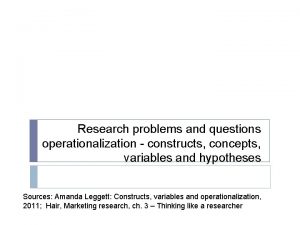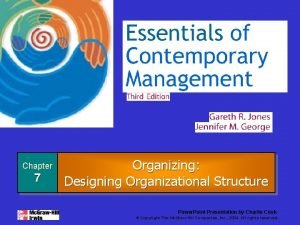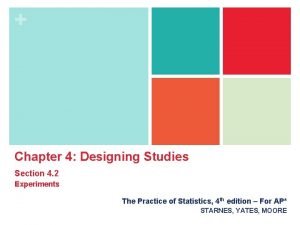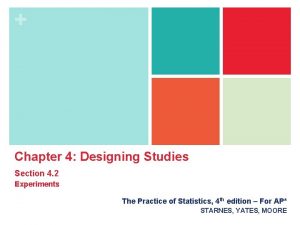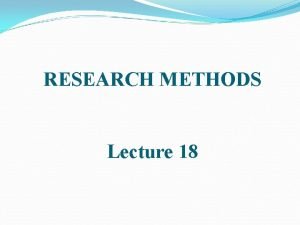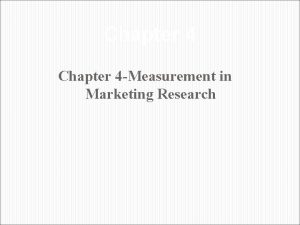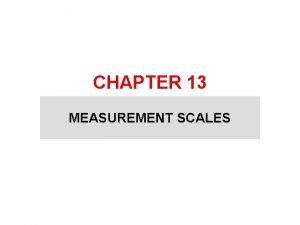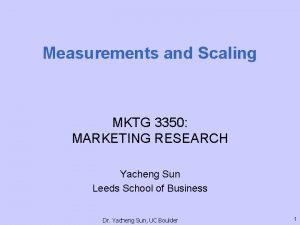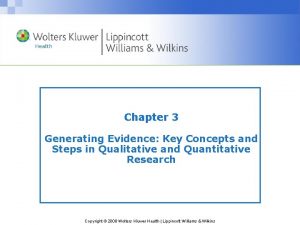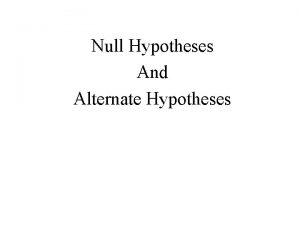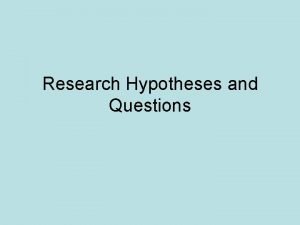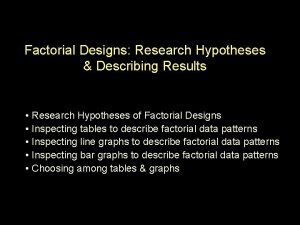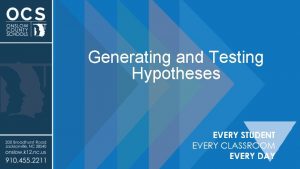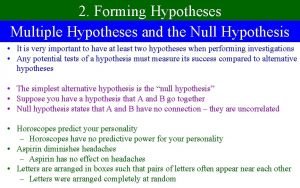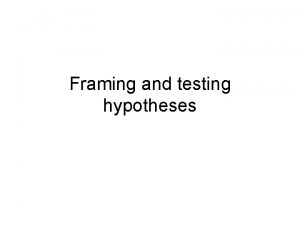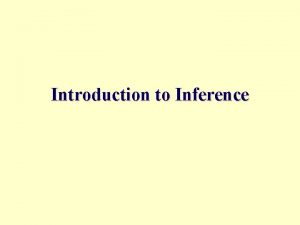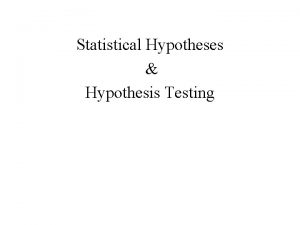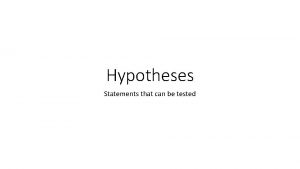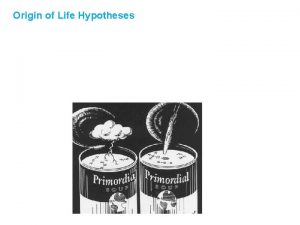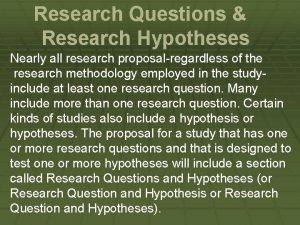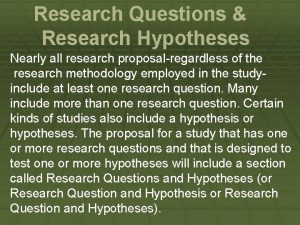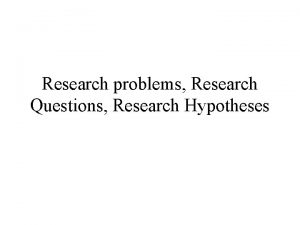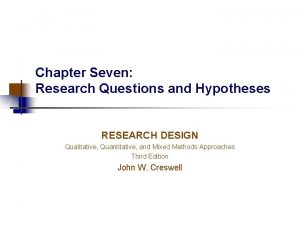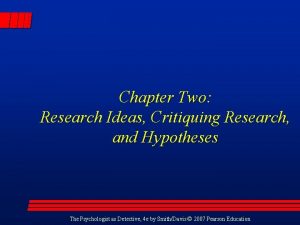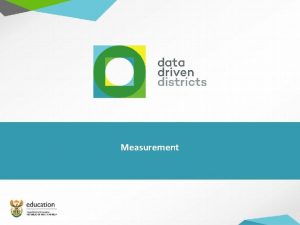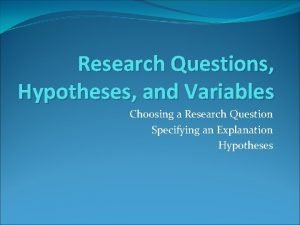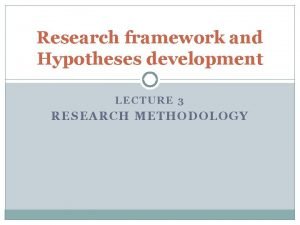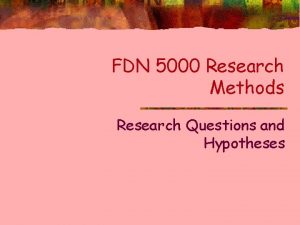Chapter 3 Designing Research Concepts Hypotheses and Measurement
































- Slides: 32

Chapter 3 Designing Research Concepts, Hypotheses, and Measurement

Research Design w Must create a Research Design w Questions are composed of concepts n Must start with a research question

Stages of Research 1) 2) 3) 4) 5) 6) 7) Developing Concepts Operationalization Selection of Research Method(s) Sampling Strategy Data Collection ‘Plan’ Analyses Results and Writing 1. Also need to consider budget issues

Operationalization w It is critical to survey research to understand how to go from ideas to concepts to variables – operationalization.

Concepts w Concept (p. 35): an idea, a general mental formulation summarizing specific occurrences w A label we put on a phenomenon, a matter, a “thing” that enables us to link separate observations, make generalizations, communicate and inherit ideas. w Concepts can be concrete, abstract, tangible or intangible. n n Concrete: Height, Major Abstract: Happiness, Love

Transferring Concepts into something Measurable w Variable: n A representation of concept in its variation of degree, varieties or occurrence. n A characteristic of a thing that can assume varying degrees or values. w Fixed meaning = constant w Most variables are truly variable = multiple categories or variables

Example: Concept and Variable w Concept: Political participation w Variables: n Voted or not n How many times a person has voted n What party a person votes for

How to be measured? w Conceptualization: The process of conceptualization includes coming to some agreement about the meaning of the concept w In practice, you often move back and forth between loose ideas of what you are trying to study and searching for a word that best describes it. w Sometimes you have to “make up” a name to encompass your concept.

Conceptualization w As you flush out the pieces or aspects of a concept, you begin to see the dimensions; the terms that define subgroups of a concept. w With each dimension, you must decide on indicators – signs of the presence or absence of that dimension. n Dimensions are usually concepts themselves.

Operationalizing Choices w You must operationalize: process of converting concepts into measurable terms n The process of creating a definition(s) for a concept that can be observed and measured w The development of specific research procedures that will result in empirical observations n n SES is defined as a combination of income and education and I will measure each by… The development of questions (or characteristics of data in qualitative work) that will indicate a concept

Variable Attribute Choices w Variable attributes need to be exhaustive and exclusive w Represent full range of possible variation w Degree of Precision n selection depends on your research interest w Is it better to include too much or too little?

Variables w The dependent variable is the variable that the researcher measures; it is called a dependent variable because it depends upon (is caused by) the independent variable. w The independent variable is the one that the researcher manipulates. w Example: If you are studying the effects of a new educational program on student achievement, the program is the independent variable and your measures of achievement are the dependent ones.

Variables w Qualitative Variable: Composed of categories which are not comparable in terms of magnitude w Quantitative Variable: Can be ordered with respect to magnitude on some dimension w Continuous Variable: A quantitative variable, which can be measured with an arbitrary degree of precision. Any two points on a scale of a continuous variable have an infinite number of values in between. It is generally measured. w Discrete Variable: A quantitative variable where values can differ only by well-defined steps with no intermediate values possible. It is generally counted.

Level of Measurement w Nominal w Ordinal w Interval w Ratio

Nominal Measures w Only offer a name or a label for a variable w There is not ranking w They are not numerically related w Gender; Race

Ordinal Measures w Variables with attributes that can be rank ordered w Can say one response is more or less than another w Distance between does not have meaning n lower class, middle and upper class w Note: Scales and indexes are ordinal measures, but conventions for analysis allow us to assume equidistance between attributes (if it makes logical sense); treat them like “interval” measures; and subject them to statistical tests

Interval Measures w Distance separating attributes has meaning and is standardized (equidistant) w “ 0” value does not mean a variable is not present w Score on an ACT test 50 vs. 100 n does not mean person is twice as smart

Ratio Measures w Attributes of a variable have a “true zero point” that means something w Waist measures and Biceps measures w Allows one to create ratios

Hypotheses w Hypotheses: (pg. 36) Untested statements that specify a relationship between 2 or more variables. w Example: Milk Drinkers Make Better Lovers

Characteristics of a Hypothesis w States a relationship between two or more variables w Is stated affirmatively (not as a question) w Can be tested with empirical evidence w Most useful when it makes a comparison w States how multiple variables are related w Theory or underlying logic of the relationship makes sense

w Hypotheses should be clearly stated at the beginning of a study. n Do not have to have a hypothesis to conduct research, general research questions.

Positive and Negative (Inverse) Relationships w Positive: as values of independent variable increase, the values of the dependent variable increase w Negative: as values of independent variable increase, the values of the dependent variable decrease (or vice versa)

Two-directional Hypotheses w More general expression of a hypothesis w Usually default in stat packages w Suggests that groups are different or concepts related, but without specifying the exact direction of the difference n Example: Men and women trust UK security differently.

One-directional hypotheses w More specific expression of a hypothesis w Specifies the precise direction of the relationship between the dependent and independent variables. n Example: Women have greater trust in UK security compared to men.

Determining Quality of Measurement w Accuracy and Consistency in Measurement w Validity is accuracy w Reliability is consistency

Reliability w Definition -- The extent to which the same research technique applied again to the same object (subject) will give you the same result w Reliability does not ensure accuracy: a measure can be reliable but inaccurate (invalid) because of bias in the measure or in data collector/coder

Validity w Definition -- The extent to which our measure reflects what we think or want them to be measuring

Face Validity w Face validity: the measure seems to be related to what we are interested in finding out even if it does not fully encompass the concept n concept = intellectual capacity l measure = grades (high face validity) l measure = # of close friends (low face validity)

Criterion Validity w Criterion validity (predictive validity): the measure is predictive of some external criterion n n Criterion = Success in College Measure = ACT scores (high criterion validity? )

Construct Validity w Construct Validity: the measure is logically related to another variable as conceptualized it to be n n construct = happiness measure = financial stability l if not related to happiness, low construct validity

Content Validity w Content Validity: how much a measure covers a range of meanings; did you cover the full range of dimensions related to a concept n Example: You think that you are measuring prejudice, but you only ask questions about race l what about sex, religious etc. ?

Methodological Approaches, Reliability and Validity w Qualitative research methods lend themselves to high validity and lower reliability. w Quantitative research methods lend themselves to lower validity and higher reliability
 Null hypothesis in research example
Null hypothesis in research example Examples of mixed methods research
Examples of mixed methods research Example of hypothesis in research proposal
Example of hypothesis in research proposal Chapter 20 testing hypotheses about proportions
Chapter 20 testing hypotheses about proportions Chapter 19 testing hypotheses about proportions
Chapter 19 testing hypotheses about proportions Chapter 20 testing hypotheses about proportions
Chapter 20 testing hypotheses about proportions Generating and testing hypotheses marzano
Generating and testing hypotheses marzano Hypotheses development
Hypotheses development Theoretical framework hypothesis
Theoretical framework hypothesis Theoretical framework hypothesis
Theoretical framework hypothesis Ruling out rival hypotheses
Ruling out rival hypotheses Analysis of competing hypotheses template
Analysis of competing hypotheses template Two type of hypothesis
Two type of hypothesis General to specific ordering of hypothesis
General to specific ordering of hypothesis Hypotheses
Hypotheses Hypothesis test
Hypothesis test Basic concepts of measurement
Basic concepts of measurement Product planning and development process
Product planning and development process Designing and managing service processes
Designing and managing service processes Designing and managing services ppt
Designing and managing services ppt Construct in research
Construct in research Chapter 7 designing organizational structure
Chapter 7 designing organizational structure Chapter 7 designing organizational structure
Chapter 7 designing organizational structure Chapter 4 designing studies
Chapter 4 designing studies Evaluating the variables affecting channel structure
Evaluating the variables affecting channel structure Chapter 4 designing studies
Chapter 4 designing studies Criteria for good measurement
Criteria for good measurement Measurement marketing research
Measurement marketing research 4 scales of measurement
4 scales of measurement Types of measurement in research
Types of measurement in research Primary scales of measurement in marketing research
Primary scales of measurement in marketing research Attitude measurement in marketing research
Attitude measurement in marketing research Key concepts of qualitative research
Key concepts of qualitative research

